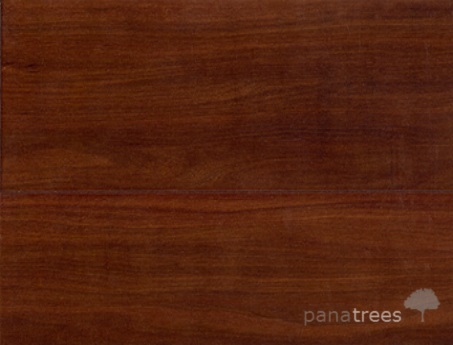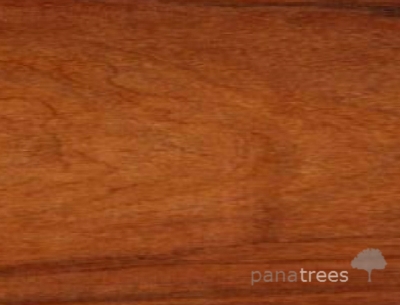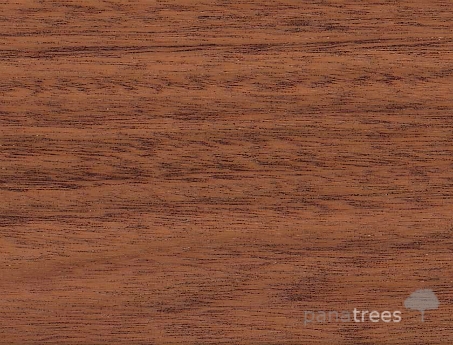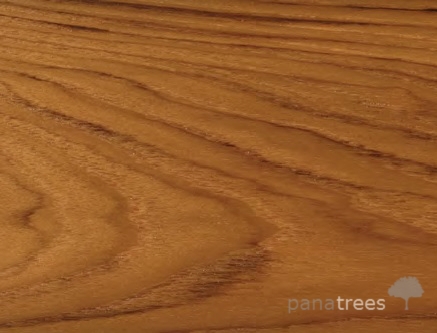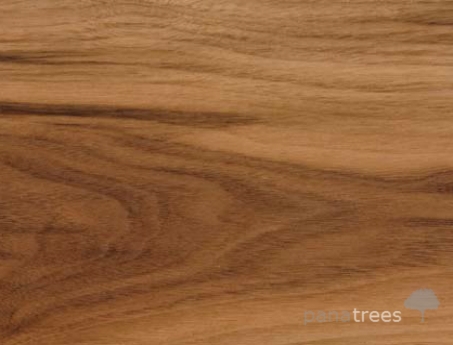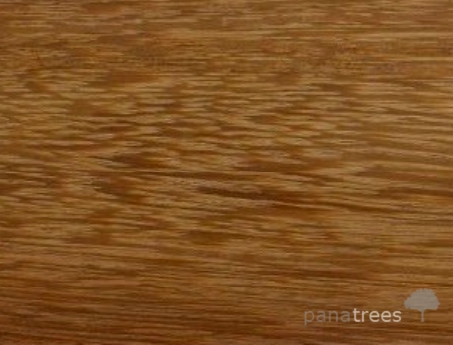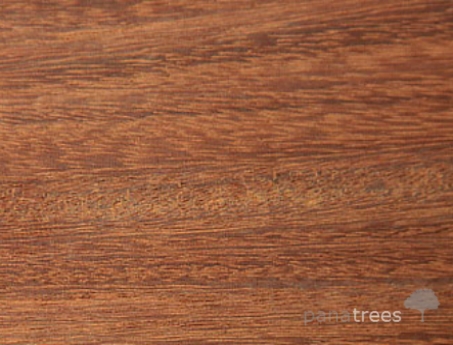

Traditional natural resistance
It is naturally resistant to rot and decay and will not attract mold and fungus growth, which makes it extremely popular not only for exterior use, but also for furniture work, veneers, flooring and other wood projects and offers more then a 30 year lifespan without preservatives!

Exotic stripes
Tigerwood has a wide range of coloring and striping. The striping can vary from fine lines to bold strokes and the color can have a large degree of color change from a light orange and tan to a deep reddish brown. It also has a highly lustrous surface that is considered almost oily in appearance.

Memorable pattern
It is one of the finest quality hardwoods available that features a unique light golden-brown to reddish-brown coloring with exotic black and brown streaks. The deep red coloring makes it attractive and can be maintained with regular treatments.
Description
Tigerwood is known by a variety of names – Brazilian koa, Congowood, African walnut, coubaril, bototo, zorrowood or muiracatiara, to name a few. Tigerwood may also refer to several different species of trees: Coula edulis, a tree species from tropical western Africa from Sierra Leone to Angola, Lovoa trichilioides, also African in origin, or Goncalo alves in South America (primarily Brazil). They all are evergreen varieties that prefer tropical or subtropical growing conditions, and all feature the same dramatic grain patterning, although color may vary from region to region.
With trees growing up to a height of 80 feet or more, it can be found in the top canopy of forests as well as the lower story and has no special soil requirements. In fact, its growing popularity has led to export restrictions in Africa from some regions to limit over-cutting and excessive logging.
Tigerwood is considered very dense and heavy with a Janka hardness up to 2160 depending upon the growing region (67% harder than Red Oak at 1210) and has a specific gravity of 0.45. It is naturally resistant to rot and decay and will not attract mold and fungus growth, which makes it extremely popular not only for exterior use, but also for furniture work, veneers, flooring and other wood projects where the dramatic look gives certain flair to the finished product.
Timber of tigerwood is reported to air-dry well with some minor warping or checking (which can occur in extreme conditions) and it generally resists shrinkage and movement after drying. Tigerwood is dimensionally stable and resists twisting and warping in the end product and will stand up well to wear. Tigerwood has a wide range of coloring and striping. The striping can vary from fine lines to bold strokes and the color can have a large degree of color change from a light orange and tan to a deep reddish brown. It also has a highly lustrous surface that is considered almost oily in appearance.
Goncalo Alves is commonly used to produce flooring products and is considered very durable, and it resists denting and traffic wear very well. What is interesting about tigerwood is that it is often graded differently than other species when used for flooring applications because of the dramatic coloring, which is what makes tigerwood so desirable. As an example, lesser grades such as #1 Common refer to small milling defects or lack of streaks in the end product. Clear grade tigerwood flooring is color-sorted for a rich pink color with pronounced brown and black streaks.
Tigerwood is considered only moderately difficult to work with, especially with hand tools. Cutting edges may wear down more quickly than with other wood species, so carbide-tips or bits are recommended for power tools. Pre-drilling is also recommended when screwing and nailing tigerwood. These steps are best to accommodate the wood’s properties, but of course also to serve to protect your investment in this exotic wood choice.
Sanding can also present more of a challenge with this hard exotic wood, and for large applications like floors, professional preparation is recommended. Tigerwood can be sealed for longer durability but weathers well naturally as well; no preservatives are needed. Depending on the amount of sunlight the wood will receive, the color will often gradually darken over time, accentuating its distinctive grain pattern and giving it a slightly more subtle striping and increased luster.
Suitability
- Cabinet doors
- Stairs and balustrades
- Decking & Cladding
- Flooring & Staircases
- Furniture
- Joinery
- Boating
- Veneer
Technical information
| Density (kg/m3 dry) | 905 | Hardness (Janka) (kN) | 9.64 | Resistance to split in nailing | Good |
| Specific gravity | 0.8-0.91 | Finish | Excellent | Resistance to split and screwing | Good |
| Modulus of rapture (Mpa dry) | 117 | Stability | High | Gluing | Poor |
| Modulus of elasticy (Mpa dry) | 16.5 | Crushing Strength (Mpa dry) | 74.2 | Durable | High |
| Radial shrinkage % | 4.2 | Sapwood Lyctid Susceptible | No | Trees | 25-35 year old |
| Tangential shrinkage % | 7.8 | Machining | Excellent | Round logs | Girth of 80-250 cm |
| Volumitric % | 11.2 | T/R ratio | 1.9 | Growing regoin | Central and South America |


Round logs. Different sizes available
- per ton


